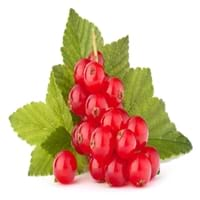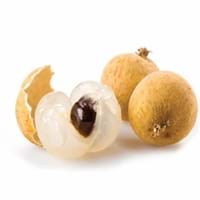Health Benefits
Cancer prevention, Gout treatment, Heart care, Regulation of heart rate, Treatment of rheumatism
Anti depressant, Anti-inflammatory properties, Healthy mucus membrane, prevents oral cavity cancer, Prevents anemia, Prevents cases of morning sickness, Prevents lung cancer, Skin rejuvenation, Treatment of colonic diseases
General Benefits
Anti oxidant properties, Controls blood pressure, Cures fever, Digestive aid, Healing of wounds, Helps in weight loss, Strengthens bones
Anti oxidant properties, Anti-inflammatory properties, Digestive aid, Gives you energy, Suppresses Arthritis
Skin Benefits
Brightens and lightens complexion, Reduces wrinkles, Treatment of acne
Reduces wrinkles, Skin rejuvenation
Hair Benefits
Protects hair
Not Available
Allergy Symptoms
Abnormally rapid heart rate, Anaphylaxis, Breathing difficulty, Hives, Itching, Swallowing difficulties
Itching, Swelling of mouth, tongue or lips, Tingling sensation in mouth
Side Effects
Possibly unsafe during pregnancy
Mouth irritation, Weight gain
Best Time to Eat
Best if taken as a breakfast (or empty stomach), As a snack in the late afternoon, Don't eat after meal, Morning time (before lunch)
As a snack in the late afternoon
Vitamin B5 (Pantothenic Acid)
Vitamin C (Ascorbic Acid)
Vitamin E (Tocopherole)
Not Available
Vitamin K (Phyllochinone)
Not Available
Lutein+Zeaxanthin
Not Available
Calories in Fresh Fruit with Peel
Calories in Fresh Fruit without Peel
Not Available
Not Available
Calories in Frozen Form
Not Available
Not Available
Calories in Dried Form
Not Available
Calories in Canned Form
Not Available
Not Available
Calories in Jam
Not Available
Type
Berry
Tree fruit, Tropical
Season
Summer
Mid to late summer
Varieties
Rovada, Stanza, Red Lake, Junifer and Jonkheer van Tets
Chompoo Longan, Kohala Seedling, Haew, Edau and Biew Kiew
Seedless Variety
No
Not Available
Inside Color
Red
Yellowish brown
Taste
Sour, Tart
Sweetish
Soil Type
Moist, Well-drained
Well-drained
Climatic Conditions
Cold
Sunny, Warm, Without frosts
Facts about
- The albino version of red currants known as white currants, are often sold as different fruit.
- Red currant tea is healthy substitute for coffee.
- There are more than 150 varieties of red currants.
- Longan is also called as "Dragon's eye" in China as it gives an impression of an eyeball.
- Longan seeds can be used to absorb the venom after the snake bite and they also help to stop bleeding.
Top Producer
Russia
Thailand
Other Countries
Belgium, France, Germany, Ireland, Italy, Netherlands, Poland, Portugal, Scotland, Spain, Sweden, United Kingdom
Australia, Combodia, Taiwan, United States of America, Vietnam
Top Importer
Germany
China
Top Exporter
Russia
Thailand
Botanical Name
Ribes rubrum
Dimocarpus longan
Synonym
Not Available
Dragon eye
Subkingdom
Tracheobionta
Viridiplantae
Division
Magnoliophyta
Tracheophyta
Class
Magnoliopsida
Magnoliopsida
Order
Saxifragales
Sapindales
Family
Grossulariaceae
Sapindaceae
Species
R. rubrum
D. longan
Generic Group
Saxifrage
Not Available
Difference Between Red Currant and Longan
We might think that Red Currant and Longan are similar with respect to nutritional value and health benefits. But the nutrient content of both fruits is different. Red Currant and Longan Facts such as their taste, shape, color, and size are also distinct. The difference between Red Currant and Longan is explained here.
The amount of calories in 100 gm of fresh Red Currant and Longan with peel is 56.00 kcal and 83.00 kcal and the amount of calories without peel is Not Available and Not Available respectively. Thus, Red Currant and Longan belong to Low Calorie Fruits and Low Calorie Fruits category.These fruits might or might not differ with respect to their scientific classification. The order of Red Currant and Longan is Saxifragales and Sapindales respectively. Red Currant belongs to Grossulariaceae family and Longan belongs to Sapindaceae family. Red Currant belongs to Ribes genus of R. rubrum species and Longan belongs to Dimocarpus genus of D. longan species. Beings plants, both fruits belong to Plantae Kingdom.









